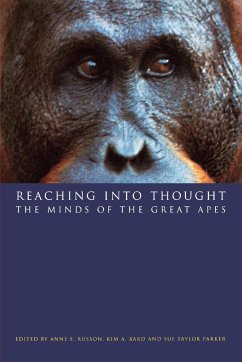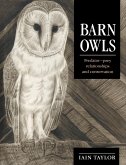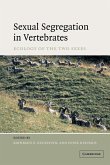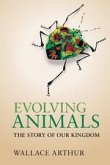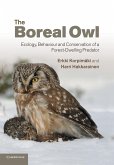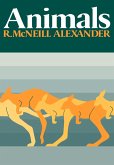E. Russon / A. Bard / Sue Taylor Parker (eds.)
Reaching into Thought
Herausgeber: Russon, Anne E.; Parker, Sue Taylor; Bard, Kim A.
E. Russon / A. Bard / Sue Taylor Parker (eds.)
Reaching into Thought
Herausgeber: Russon, Anne E.; Parker, Sue Taylor; Bard, Kim A.
- Broschiertes Buch
- Merkliste
- Auf die Merkliste
- Bewerten Bewerten
- Teilen
- Produkt teilen
- Produkterinnerung
- Produkterinnerung
Investigates current field and theoretical information on great ape cognition.
Andere Kunden interessierten sich auch für
![Barn Owls Barn Owls]() Iain TaylorBarn Owls84,99 €
Iain TaylorBarn Owls84,99 €![Sexual Segregation in Vertebrates Sexual Segregation in Vertebrates]() Sexual Segregation in Vertebrates68,99 €
Sexual Segregation in Vertebrates68,99 €![Evolving Animals Evolving Animals]() Wallace ArthurEvolving Animals46,99 €
Wallace ArthurEvolving Animals46,99 €![The Boreal Owl The Boreal Owl]() Erkki KorpimakiThe Boreal Owl90,99 €
Erkki KorpimakiThe Boreal Owl90,99 €![The Biology of Centipedes The Biology of Centipedes]() J. G. E. LewisThe Biology of Centipedes63,99 €
J. G. E. LewisThe Biology of Centipedes63,99 €![Animals Animals]() R. McNeill AlexanderAnimals60,99 €
R. McNeill AlexanderAnimals60,99 €![The Trematoda The Trematoda]() DawesThe Trematoda61,99 €
DawesThe Trematoda61,99 €-
-
-
Produktdetails
- Produktdetails
- Verlag: Cambridge University Press
- Seitenzahl: 478
- Erscheinungstermin: 25. Februar 2016
- Englisch
- Abmessung: 229mm x 152mm x 26mm
- Gewicht: 686g
- ISBN-13: 9780521644969
- ISBN-10: 0521644968
- Artikelnr.: 22266656
- Herstellerkennzeichnung
- Libri GmbH
- Europaallee 1
- 36244 Bad Hersfeld
- gpsr@libri.de
- Verlag: Cambridge University Press
- Seitenzahl: 478
- Erscheinungstermin: 25. Februar 2016
- Englisch
- Abmessung: 229mm x 152mm x 26mm
- Gewicht: 686g
- ISBN-13: 9780521644969
- ISBN-10: 0521644968
- Artikelnr.: 22266656
- Herstellerkennzeichnung
- Libri GmbH
- Europaallee 1
- 36244 Bad Hersfeld
- gpsr@libri.de
1. Exploring the minds of the great apes: Issues and controversies Anne E.
Russon and Kim A. Bard; Part I. The Scope of Great Ape Intelligence: 2.
Chimpanzees and capuchin monkeys: Comparative cognition James R. Anderson;
3. Acting and understanding: tool use revisited through the minds of
capuchin monkeys Elisabetta Visalberghi and Luca Limongelli; 4.
Consolation, reconciliation, and a possible cognitive difference between
macaques and chimpanzees Frans B.M. de Waal and Filippo Aureli; 5. The
misunderstood ape: Cognitive skills of the gorilla Richard W. Byrne; 6.
Ostensive behavior in great apes: the role of eye contact Juan Carlos
Gomez; 7. Imitation in everyday use: matching and rehearsal in the
spontaneous imitation of rehabilitant orangutans Anne E. Russon; 8. 'More
is less': the elicitation of rule-governed resource distribution in
chimpanzees Sarah T. Boysen; 9. Tool-using behavior in wild Pan paniscus:
Social and ecological considerations Ellen J. Ingmanson; 10. Comparison of
chimpanzee material culture between Bossou and Nimba, West Africa Tetsuro
Matsuzawa and Gen Yamakoshi; Part II. Organization of Great Ape
Intelligence: Development, Culture and Evolution: 11. Influences on
development in infant chimpanzees: Enculturation, temperament and cognition
Kim A. Bard and Kathryn H. Gardner; 12. Heterochrony and the evolution of
primate cognitive development Jonas Langer; 13. Simon says: The development
of imitation in an enculturated orangutan H. Lyn Miles, Robert W. Mitchell
and Stephen E. Harper; 14. Imitation, pretense, and mindreading: secondary
representation in comparative primatology and developmental psychology?
Andrew Whiten; 15. Self-awareness and self-knowledge in humans, apes and
monkeys Daniel Hart and Mary Pat Karmel; 16. Apprenticeship in
tool-mediated extractive foraging: the origins of imitation, teaching and
self-awareness in great apes Sue Taylor Parker; 17. The effect of humans on
the cognitive development of apes Josep Call and Michael Tomasello; 18.
Three approaches for assessing chimpanzee culture Christophe Boesch; 19. On
the wild side of culture and cognition in the great apes Sue Taylor Parker
and Anne E. Russon; Index.
Russon and Kim A. Bard; Part I. The Scope of Great Ape Intelligence: 2.
Chimpanzees and capuchin monkeys: Comparative cognition James R. Anderson;
3. Acting and understanding: tool use revisited through the minds of
capuchin monkeys Elisabetta Visalberghi and Luca Limongelli; 4.
Consolation, reconciliation, and a possible cognitive difference between
macaques and chimpanzees Frans B.M. de Waal and Filippo Aureli; 5. The
misunderstood ape: Cognitive skills of the gorilla Richard W. Byrne; 6.
Ostensive behavior in great apes: the role of eye contact Juan Carlos
Gomez; 7. Imitation in everyday use: matching and rehearsal in the
spontaneous imitation of rehabilitant orangutans Anne E. Russon; 8. 'More
is less': the elicitation of rule-governed resource distribution in
chimpanzees Sarah T. Boysen; 9. Tool-using behavior in wild Pan paniscus:
Social and ecological considerations Ellen J. Ingmanson; 10. Comparison of
chimpanzee material culture between Bossou and Nimba, West Africa Tetsuro
Matsuzawa and Gen Yamakoshi; Part II. Organization of Great Ape
Intelligence: Development, Culture and Evolution: 11. Influences on
development in infant chimpanzees: Enculturation, temperament and cognition
Kim A. Bard and Kathryn H. Gardner; 12. Heterochrony and the evolution of
primate cognitive development Jonas Langer; 13. Simon says: The development
of imitation in an enculturated orangutan H. Lyn Miles, Robert W. Mitchell
and Stephen E. Harper; 14. Imitation, pretense, and mindreading: secondary
representation in comparative primatology and developmental psychology?
Andrew Whiten; 15. Self-awareness and self-knowledge in humans, apes and
monkeys Daniel Hart and Mary Pat Karmel; 16. Apprenticeship in
tool-mediated extractive foraging: the origins of imitation, teaching and
self-awareness in great apes Sue Taylor Parker; 17. The effect of humans on
the cognitive development of apes Josep Call and Michael Tomasello; 18.
Three approaches for assessing chimpanzee culture Christophe Boesch; 19. On
the wild side of culture and cognition in the great apes Sue Taylor Parker
and Anne E. Russon; Index.
1. Exploring the minds of the great apes: Issues and controversies Anne E.
Russon and Kim A. Bard; Part I. The Scope of Great Ape Intelligence: 2.
Chimpanzees and capuchin monkeys: Comparative cognition James R. Anderson;
3. Acting and understanding: tool use revisited through the minds of
capuchin monkeys Elisabetta Visalberghi and Luca Limongelli; 4.
Consolation, reconciliation, and a possible cognitive difference between
macaques and chimpanzees Frans B.M. de Waal and Filippo Aureli; 5. The
misunderstood ape: Cognitive skills of the gorilla Richard W. Byrne; 6.
Ostensive behavior in great apes: the role of eye contact Juan Carlos
Gomez; 7. Imitation in everyday use: matching and rehearsal in the
spontaneous imitation of rehabilitant orangutans Anne E. Russon; 8. 'More
is less': the elicitation of rule-governed resource distribution in
chimpanzees Sarah T. Boysen; 9. Tool-using behavior in wild Pan paniscus:
Social and ecological considerations Ellen J. Ingmanson; 10. Comparison of
chimpanzee material culture between Bossou and Nimba, West Africa Tetsuro
Matsuzawa and Gen Yamakoshi; Part II. Organization of Great Ape
Intelligence: Development, Culture and Evolution: 11. Influences on
development in infant chimpanzees: Enculturation, temperament and cognition
Kim A. Bard and Kathryn H. Gardner; 12. Heterochrony and the evolution of
primate cognitive development Jonas Langer; 13. Simon says: The development
of imitation in an enculturated orangutan H. Lyn Miles, Robert W. Mitchell
and Stephen E. Harper; 14. Imitation, pretense, and mindreading: secondary
representation in comparative primatology and developmental psychology?
Andrew Whiten; 15. Self-awareness and self-knowledge in humans, apes and
monkeys Daniel Hart and Mary Pat Karmel; 16. Apprenticeship in
tool-mediated extractive foraging: the origins of imitation, teaching and
self-awareness in great apes Sue Taylor Parker; 17. The effect of humans on
the cognitive development of apes Josep Call and Michael Tomasello; 18.
Three approaches for assessing chimpanzee culture Christophe Boesch; 19. On
the wild side of culture and cognition in the great apes Sue Taylor Parker
and Anne E. Russon; Index.
Russon and Kim A. Bard; Part I. The Scope of Great Ape Intelligence: 2.
Chimpanzees and capuchin monkeys: Comparative cognition James R. Anderson;
3. Acting and understanding: tool use revisited through the minds of
capuchin monkeys Elisabetta Visalberghi and Luca Limongelli; 4.
Consolation, reconciliation, and a possible cognitive difference between
macaques and chimpanzees Frans B.M. de Waal and Filippo Aureli; 5. The
misunderstood ape: Cognitive skills of the gorilla Richard W. Byrne; 6.
Ostensive behavior in great apes: the role of eye contact Juan Carlos
Gomez; 7. Imitation in everyday use: matching and rehearsal in the
spontaneous imitation of rehabilitant orangutans Anne E. Russon; 8. 'More
is less': the elicitation of rule-governed resource distribution in
chimpanzees Sarah T. Boysen; 9. Tool-using behavior in wild Pan paniscus:
Social and ecological considerations Ellen J. Ingmanson; 10. Comparison of
chimpanzee material culture between Bossou and Nimba, West Africa Tetsuro
Matsuzawa and Gen Yamakoshi; Part II. Organization of Great Ape
Intelligence: Development, Culture and Evolution: 11. Influences on
development in infant chimpanzees: Enculturation, temperament and cognition
Kim A. Bard and Kathryn H. Gardner; 12. Heterochrony and the evolution of
primate cognitive development Jonas Langer; 13. Simon says: The development
of imitation in an enculturated orangutan H. Lyn Miles, Robert W. Mitchell
and Stephen E. Harper; 14. Imitation, pretense, and mindreading: secondary
representation in comparative primatology and developmental psychology?
Andrew Whiten; 15. Self-awareness and self-knowledge in humans, apes and
monkeys Daniel Hart and Mary Pat Karmel; 16. Apprenticeship in
tool-mediated extractive foraging: the origins of imitation, teaching and
self-awareness in great apes Sue Taylor Parker; 17. The effect of humans on
the cognitive development of apes Josep Call and Michael Tomasello; 18.
Three approaches for assessing chimpanzee culture Christophe Boesch; 19. On
the wild side of culture and cognition in the great apes Sue Taylor Parker
and Anne E. Russon; Index.

